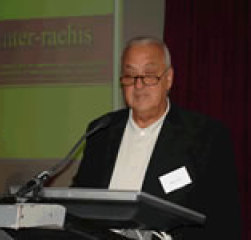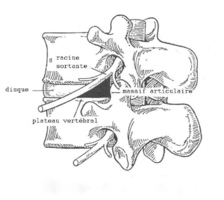
DECOMPRESSIVE CAUDAL EPIDURAL
INJECTIONS FOR TREATING RADICULALGIA
Eric GOZLAN (PARIS, France) - IITS PHOENIX, May 2009
PURPOSE:
The author exposes the advantages of the Caudal Epidural Injections (CEI) compared to translaminar or transforaminal steroids epidural injections.
SUMMARY OF BACKGROUND DATA:
In France, this technique was recommended by J.A. SICARD since 1901 to treat sciatica.
O. TROISIER (1973, France) learned the technique from J. CYRIAX (1950, England) who had an experience of around 50 000 caudal injections to treat radiculalgia caused by herniated discs.
Since then, several comparative and randomized studies were conducted tending to prove the superiority of this technique compared to translaminar epidural injections.
The average rate of success was around 65%.
INDICATIONS:
The CEI can be recommended in radiculalgia due to a discoradicular conflict, a degenerative canal stenosis or after FBSS.
TECHNIQUE:
This technique must be performed under the surveillance of an anesthetist.
A 20G catheter is introduced in the sacral canal through the sacral cornua under fluoroscopic control.
First,are injected 10 to 15 cc of contrast (Iopamiron) realizing a sacco-epidurography.
Then, an important volume of 50cc is injected, containing 15cc of 1% Xylocaïne diluted in 30cc of isotonic solution and 5cc of Hydrocortancyl.
The injection must be carried out quite slowly (10 to 20 mn) with an electric syringe.
The objective is to obtain a mechanical decompressive effect as well as a pharmacologic effect. The other advantage is that the “epidural washing” allows the evacuation of the inflammation chemical products due to the discoradicular conflict.
CONCLUSION:
The author’s experience gathers over 10 000 caudal injections. He has noticed a great advantage to this technique compared to steroid injections which often don’t have a long term effect.
The decompressive effect added to the epidural washing may bring out a complete recovery in 2/3 of the cases, avoiding any surgery.

